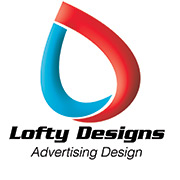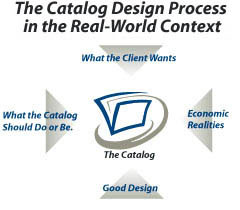A Designer’s Catalog Design “Style”.
One of the most difficult things to evaluate when choosing a design firm is “style”. Since most designers create a design that matches their client’s needs, their portfolio may not show catalogs of the style you are looking for. It shows the style that those clients were looking for when they hired that particular designer. When reviewing our past catalog designs, please look at the quality of the work, and not necessarily the “style”. The “style” is determined not by what we have executed in the past, but by the immediate needs of the present project. A good designer will give you the catalog design you are looking for based on the research/discovery phase of the project. We start the hunt for the catalog design needed by providing new customers client questionnaires: one short and one long, to determine your market and where you are in that market. (Non-disclosure forms are available.) We do this because we like to learn about and address a market with an informed catalog design approach. We work to understand a company’s business as intimately as its employees because we know this is the only way to thrive in today’s business climate. We will not step over any issue on the path to creating a catalog that will make your cash register ring.
We always consider several possible approaches for your catalog design. When the “style” is set before hand, this forecloses the creative back and forth process that arrives at a superior product. We consider “style” an ugly word. Below is a graphic that determines what a catalog design should do or be and not its “style” which is irrelevant.
Some of the design elements and sales approaches we have implemented in projects for companies in other markets could be very applicable to your project. We have used this out of category strategy to successfully address our client’s needs. We inform our designs from a 30 year storehouse of design experience. We may even be rash enough to suggest selling or marketing procedures which seem to us, looking in from the outside, as likely to improve your existing marketing efforts. We would welcome the opportunity to review your existing marketing plan at length.
Best wishes on a successful completion of your catalog.

